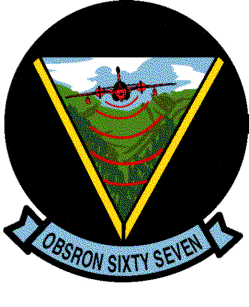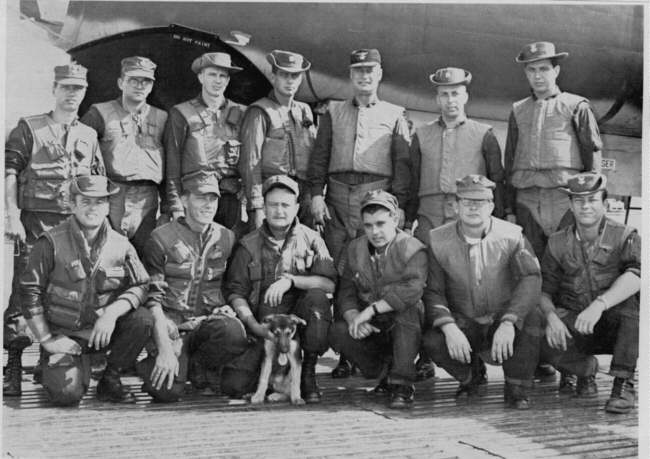|
NKP's NAVY - by L. W. Gire
At the height of the Vietnam War, a secret Navy 12 plane squadron arrived at the Nakhon
Phanom Air Commando base in Thailand. The squadron aircraft were old P2V-5F anti-submarine patrol planes that had been considerably
modified into armed, jungle green gun ships . Of course, every would-be comic that saw them at Nakhon Phanom asked, Whats
the Navy going to do, hunt for subs in the Mekong?
North Vietnam was moving massive amounts of munitions by
truck and troops down the Ho Chi Minh Trail undetected in mid-1966. Secretary of Defense, Robert McNamara was opposed to attacking
North Vietnam military targets and infrastructure and to stopping the movement of war materials into North Vietnam by mining
their harbors as advocated by the military. In the fall of 1966, he ordered the military to submit a proposed plan for an
anti-infiltration system designed to stop or greatly reduce the flow of men and war material from North Vietnam into South
Vietnam. The quickest solution available was to modify and employ the Navys sonobuoy (a listening device used to detect submarines
underwater) to implant in the jungle canopy to detect the movement of NVA trucks and troops.
The converted
sonobouys, dubbed Acoubuoys, were camouflaged jungle green and parachuted into the jungle, snagged in the top jungle canopy,
and hung unseen high off the ground. Sensitive microphones, that replaced the hydrophones could pick up the sound of truck
and troop movement below.
The Navy had a number of anti-submarine aircraft in its inventory with sonobuoy
racks installed and capable of delivering the modified listening devices. The Navy determined that available P2V-5Fs would
be the quickest and the best delivery platform to modify for implanting the modified sonobuoys along the Ho Chi Minh Trail.
By this stage of the war, the North Vietnamese Army (NVA) had heavily fortified the trail with highly mobile
ZPU-23mm, 37mm, and some radar controlled 57mm guns. Survivability of the slow, lumbering P2V-5F in this environment was questionable.
But the need was urgent, our troops in South Vietnam were taking heavy casualties. The Defense Department decided to deploy
the P2V-5Fs to provide an interim capability until Air Force F-4 jets could be modified to take over the task.
The initial overhaul was done in three phases at the Martin Aircraft Company in Baltimore, MD. This overhaul and replacement
of electronics included installing new self-sealing bladder fuel tanks (capable of holding 2800 gallons of fuel and sustaining
small arms and shrapnel hits), and painting the aircraft a flat, jungle green. After this modification, the aircraft were
redesignated as the OP-2E. Modifications to the aircraft continued well into the deployment and operational phase of the the
squadron.
Much of the modification work was done by the VO-67 squadron maintenance organization. The APS-20E submarine search radar,
with its large radar dome, and the MAD gear and boom (used to magnetically detect submerged submarines) were removed. Wingtip
tanks were removed and extensive armor plating was added, primarily in the bombardier's nose station, cockpit, flight deck,
and the aft gunner's stations to protect the crews. Two underwing SUU-11 six-barreled mini guns were installed.
A Chaff dispenser was added aft where the MAD boom had protruded. LORAN C, a new version of the LOng Range Aide to Navigation,
replaced the old LORAN system used by the Navy at that time and was used to drop sensors during the monsoon season Internal
mounts for the M-60 machine guns were installed at both hatches in the after station of the OP-2E aircraft. These hand-held
7.62mm guns fired 550 rounds per minute and were manned by two crew members. To facilitate egress for the crew forward of
the wing beam to bail out, the deck hatch to the nose gear tunnel was enlarged. Threat-detection electronics and a terrain-clearance
radar were added. Bomb bay racks were fabricated to carry additional Acoubuoys. A Norden bombsight was installed in the plexiglass
nose of the OP-2E. This was the result of the added mission of implanting the Air-delivered Seismic Detection Sensor (ADSID)
that presented a problem that the old P2V aircraft was not equipped to handle. The addition of the J-34s to the P2V-5Fs had
reduced the under-winglaunch stubs from 16 to 8 stations. VO-67 overcame this shortage of stations by using MER weapon racks
that could hold three ADSIDS on each of these eight stations. However, the real problem was the lack of an accurate delivery
system for the ADSIDs. Navy patrol plane pilots dropped sonobuoys and torpedoes at low altitude by sight or timing. An accurate
means of dropping the ADSID from 2500 feet or higher was needed.
The Norden bombsight had been used extensively
in WW-II and had been installed in the Navys PB4Y-2 aircraft. VO-67 requested Norden bombsights and after demonstrating
their accuracy at Eglin AFB, Pentagon officials agreed that the Norden bombsight was what was needed and had the Rock Island
Arsenal overhaul twelve bombsights (for this they had to locate and recall retired WW-II Norden bombsight technicians). An
Air Force Norden bombsight instructor, Lt Col Conrad Brown, was found and sent to Alameda to help train the bombardiers.
Lt Col Brown located a battered copy of a WW-II training film on the Norden bombsight in the Smithsonian Institute. He
had it shipped PRIORITY ONE to VO-67 and used it to train the Squadron bombardiers. Lt Col Brown deployed with the squadron
to continue training the VO-67 third pilots who developed into qualified bombardiers.
The first flight of three
OP-2Es departed Alameda on 6 November 1967 for Nakhon Phanom Royal Thai Air Force Base (NKP) in Thailand led by CAPT Wallace
"Wally" Sharp. The last flight of three OP-2Es arrived at Nakhon Phanom on 15 November 1967. Much credit for the
smooth deployment must be given to the Air Force Military Air Transport service for the professional job they did in moving
the rest of the squadron. Eighteen C-141s arrived at Alameda right on schedule. Because of the runway landing weight limitations
at Nakhon Phanom, each C-141 was limited to 45,000 pounds of cargo. One after another they were efficiently loaded and departed
with loads ranging from large electronic vans to administrative files. In all, they airlifted 629,021 pounds of VO-67 personnel
and cargo to NKP. The personnel compliment of VO-67 when they arrived at NKP was 1 Captain, 8 Commanders, 3 Commander Selectees,
5 Lieutenant Commanders, 40 junior officers, 23 Chief Petty Officers, 220 rated enlisted personnel, and 14 Airmen. They also
had 5 civilian representatives attached to the squadron; 1 from Lockheed, 1 from Hazeltine, 1 from Martin Marietta, and 2
from Sandia Lab.
On arrival at Nakhon Phanom, the VO-67 pilots immediately began flying combat missions with
the Air Force 23rd TASS FACs (Forward Air Controllers) in the small Cessna O-2A (Nail) aircraft to familiarize themselves
with the Ho Chi Minh Trail and enemy gun emplacements. The Air Force FAC pilots helped the newly arrived Navy pilots tremendously.
The FAC pilots became a valuable intelligence asset to the VO-67. CAPT Sharp initiated a close working relationship shortly
after VO-67s arrival at NKP by inviting the FAC pilots to a party with the VO-67 pilots at the NKP Officers club.
The FACs flew every day and night and kept track, for their own survival and that of the strike aircraft they marked
the targets for, of where the North Vietnamese moved their antiaircraft guns. The FACs that had flown the night before provided
the latest NVA triple-A firing positions for the following days VO-67 combat missions.
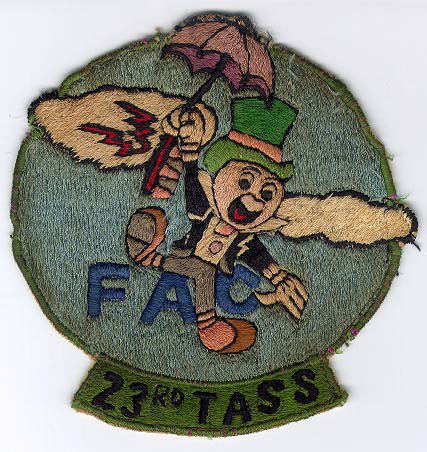
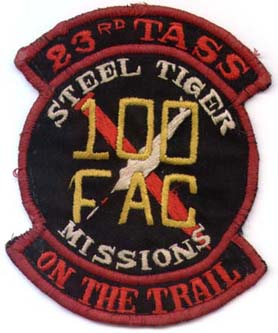
Close friendships developed among the Air Force FAC and Navy pilots; two of them were highly instrumental in the later rescue
of seven VO-67 crew members after their plane was hit by AAA fire and they bailed out over hostile territory. The Air Force
O-2A FAC, A1E, and Navy VO-67 pilots at Nakhon Phanom quickly bonded into a mutual respect support group.
Each
VO-67 crew was responsible for planning their own assigned missions. They studied the NVA triple-A gun positions and terrain
to determine the safest flight path and altitude profile in and out of the target area. Some missions were as simple as diving
from 12,000 feet on the sensor implant heading, leveling off at drop altitude, slowing to drop airspeed, laying the sensor
string, and climbing back to 12,000 feet and heading home. Drop altitude for the Acoubuoys was always 500 feet. The ADSIDS
were dropped from 2,500 feet and later 5,000 feet. Missions in heavy areas of enemy AAA concentrations required the crews
to use terrain masking wherever possible. The high karst outcroppings in some target areas were ideal for this tactic. Some
called for jinking dives to sensor implant altitude and numerous heading changes to the target to avoid the anti-aircraft
gun emplacements. Acoubuoy drops in heavily defended areas were made by running into the area at tree top level, popping
up to 500 feet, laying the sensors, dropping back to the deck and flying the safest route out.
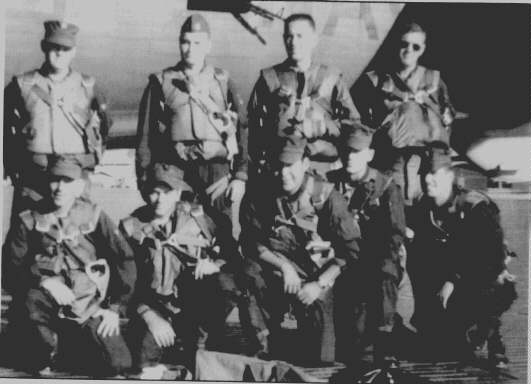
Crew Two - Brothers Forever
On 11 January 1968, the VO-67 Executive Officer (XO), CDR Dell Olson, was on an Acoubuoy drop mission over the Ho Chi Minh
Trail; at 9:57 AM radio contact with his aircraft was lost (the FAC working the mission had also lost visual contact with
the OP-2E). Two other OP-2Es were working the trail that morning. They tried to reestablish radio contact with Crew 2.
One OP-2E went under the overcast and spent three hours searching the area. There were some karst outcropping in the area
but it was mostly dense jungle. The base of the overcast was above the highest terrain in the area so they were able to search
the whole area. The jungle was so dense in most places that a plane crashing into it would not leave a discernible entry
point and the crash could not be seen from the air. No trace of the Crew 2 aircraft was found by the searching VO-67 aircraft.
On 23 January an Air Force A-1 located a suspected crash site. On 25 January an O-2 from Nakon Phanom photographed the site.
Photo interpretation determined that the wreckage was that of BUNO 131436, Crew 2s aircraft. It was located on the
north side of a cliff, 150 feet below the 4,583 foot ridge line. Due to the hostile environment in the crash site area,
it was decided not to insert an Investigation and Recovery team. The remains of Crew 2 were finally recovered in the summer
of 2001 and returned to the states. The Parade Sunday newspaper supplement (over 40,000,000 readers) carried the story in
their 22 July 2001 edition.
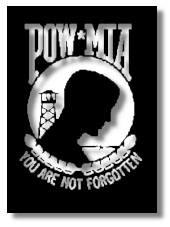
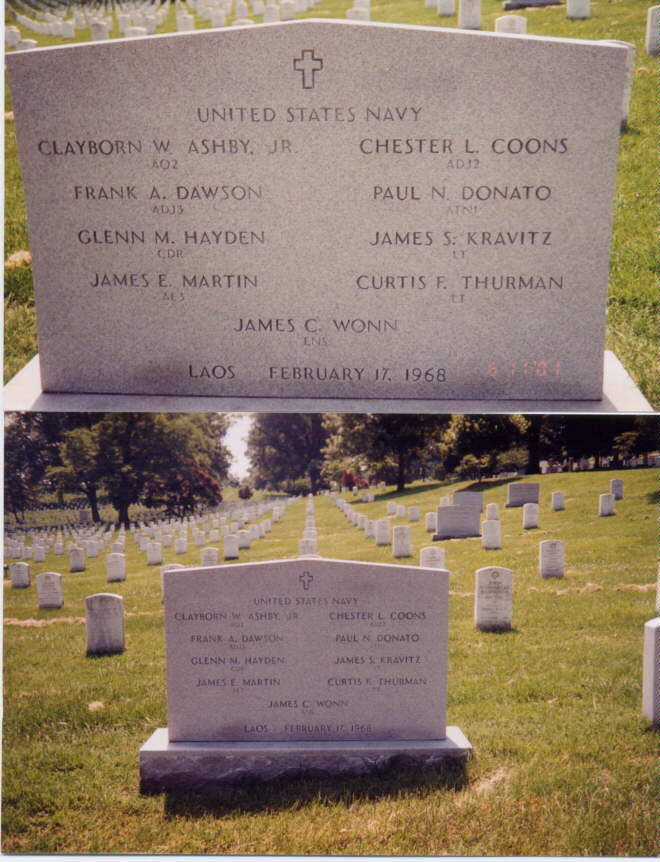
On February 17, 1968, CDR Glenn Hayden and his Crew 5 were dropping Acoubuoys over the trail in Laos. He had two F-4 escorts
out of DaNang and an O-2A FAC spotter. After coming off his first target run, CDR Hayden reported that they had been hit
by small arms fire in the starboard wing but were continuing on with their second assigned target run. During thesecond
run, the fighter escort radioed to the OP-2E that its starboard engine was on fire, CDR Hayden acknowledged and reported that
he was aborting the mission and returning to base. The F-4s climbed through the overcast with the intention of joining the
OP-2E on top and escorting him back to base. The last radio transmission they heard from the OP-2E was, "Were beat up
pretty bad .....". The F-4s dropped back down below the overcast and found the burning wreckage of the OP-2E; no parachutes
were seen or emergency beepers were heard.
Ten days later, VO-67 suffered its third combat loss on 27 February.
CDR Paul Miliuss OP-2E was shot down while implanting sensors in Laos. The aircraft was flying at 5,000 feet above the jungle
tops. There werent any 57mm radar controlled guns reported to be in the area of his drop, but if it wasnt that, it had to
be the best 37mm gun crew in the world. No flack was spotted before the aircraft was hit, so it almost had to be a direct
hit on the first salvo. The aircraft was hit in the radar well area where the old APS -20E radar had been removed. One crewman,
PO2 John F. Hartzheim, was killed instantly. The hydraulic and electrical systems were severely damaged and the aircraft
immediately filled with acrid smoke and fumes. CDR Milius ordered his crew to bail out. He remained at the controls of the
stricken aircraft until the remaining seven crewmen had successfully bailed out.
One O2 FAC pilot, Major Sam
Weaver, flew alongside MR-7 as the crew bailed out and kept a plot where each crewman had landed. Another FAC pilot, Major
Phil Maywald also came to assist in the rescue. The "Sandys", A-1H aircraft, that provided fire protection for
downed airmen, and the rescue helicopters, better known as the Jolly Greens and "Buffs", were soon on the scene.
Sandys were from the 602nd Fighter Commando Squadron and helicopters from the 37th Air Rescue Squadron at Nakhon Phanom
participated in the rescue along with other Air Rescue Recovery Squadrons from DaNang and Udorn. The FACs vectored the helos
to each of the downed crewmen. Since they were in a very hostile area, the helos wasted no time in picking up the crew and
getting out of there.
CDR Milius was seen to bail out, but never located and listed as MIA. He was
promoted to the Rank of Captain on 1 July 1972. On 26 April 1978, he was officially pronounced "presumed killed in action"
and posthumously awarded the Navy Cross. On 23 November 1996, the Aegis Guided Missile Destroyer Milius (DDG 69) was commissioned
in his honor at the Ingalls Shipbuilding, Pascagoula, Mississippi.
U.S.S. Milius Web Site
On 29 February 1968, two days after MR-7 was shot down, the last one of the 12 fully modified OP-2Es arrived at NKP. With
the three losses, VO-67 was now a nine plane squadron. MR-11 was repainted to MR-7 and the rescued members of Crew 7 continued
to fly as a crew.
The North Vietnamese Tet offensive of 1968 was an all-out effort to take the U. S. Marine
Base at Khe Sanh. On 22 January 1968 VO-67 commenced implanting extensive Acoubuoy sensor fields around the combat base
and its approaches to assist in lifting the siege of the Marine stronghold. The special bomb bay racks to hold additional
Acoubuoys in the OP-2E were used for the first time in the close-in support of Khe Sanh. These Acoubuoy flights were classic
mission profiles of Squadron developed tactics and what they had trained for in California and Florida. The OP-2Es came into
the area skimming above the jungle tree tops or rivers, popped up to 500', laid their string of sensors, dropped back down
on the deck, and got the hell out of there as fast as the old, lumbering patrol planes would take them!
Estimates
of the number of North Vietnamese that took part in the siege of Khe Sanh vary, but most agree there were upwards of 20,000
NVA troops supported by tanks and anti-aircraft weapons. The latter accounted for eight U.S. aircraft during January and
February. VO-67 flight crews that participated in implanting Acquobuoys in defense of Khe Sanh were awarded the Navy
Commendation Metal with Combat 'V' for missions that were,"-- of the very highest priority" and for achieving their
goals, "-- despite poor weather, rugged terrain and enemy defenses which included surface-to-air missiles and anti-aircraft
guns".
On May 25 1968, the Chief of Naval Operations set the date for the disestablishment of VO-67 as of
1 July 1968. At that time the mission was to be taken over by the Air Forces 25th Tactical Fighter Squadron. In June of
1968, the squadron received a message from the Navy disestablishing VO-67. As of 1 July 1968, the squadron no longer existed,
personnel were ordered to return to the States for further assignment. The last squadron combat mission implanting sensors
was on 25 June, 1968. VO-67 lost 25% of its aircraft in combat and 20 crewmen, less than half of what the planners had expected
and predicted. This was due to the outstanding airmanship of one of the finest multi-engine squadrons ever assembled.
However, a large part of the credit must be given to the Air Force FAC pilots at NKP and the training and intelligence they
provided the VO-67 pilots. They taught the VO-67 pilots the Ho Chi Minh Trail and how to survive in the air spaces over
it. The FAC pilots returning from night missions would mark the maps in NKP Intelligence with the location of the AAA guns
they saw firing. This knowledge was an invaluable contribution to the survival of the OP-2E missions the next day.
CAPT Sharp became fast friends with Lt Col Palaster, the Commanding Officer of the O-2 FAC Squadron, as did many of
the VO-67 pilots. He was so respected that when he was promoted to full Colonel while at Nakhon Phanom, the officers of VO-67
threw him a traditional Navy "wetting down" party and made him an Honorary Naval Aviator. The FAC pilots flying
the little O2 aircraft came from Air Force fighter, attack, and even SAC commands and their daring and courage was respected
by all the Air Force, Navy, and Marine pilots in the Vietnam War. The Navy and VO-67 owe a deep debt of gratitude to these
brave pilots and good friends.
How many American and South Vietnamese lives were saved by the courage and sacrifices
of VO-67 in successfully planting sensors along the Ho Chi Minh Trail and around Khe Sanh will never be known. The Air
Force reported that truck kills tripled, for a like period, after the sensors were implanted and used to detect and pinpoint
targets. Senior Marine officers estimated at casualties at the siege of Khe Sanh would have been double that experienced
if it had not been for the sensors implanted by the VO-67 Navy crews.
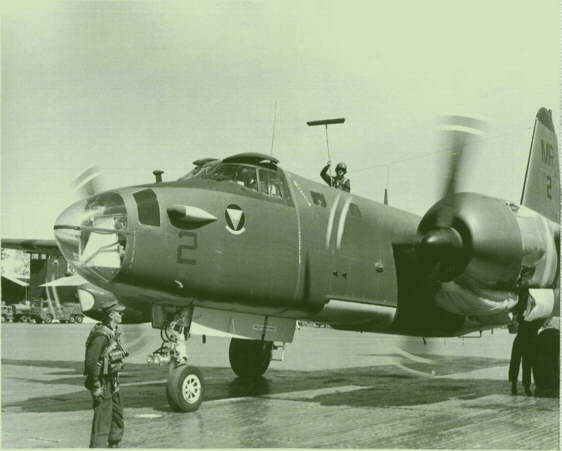
23rd TASS
|

